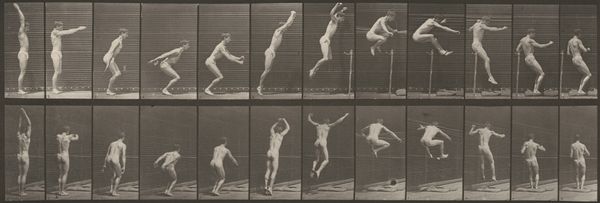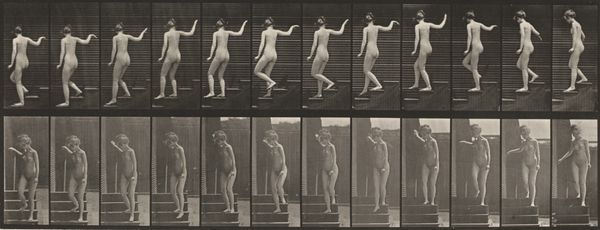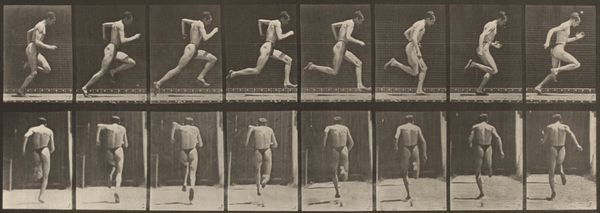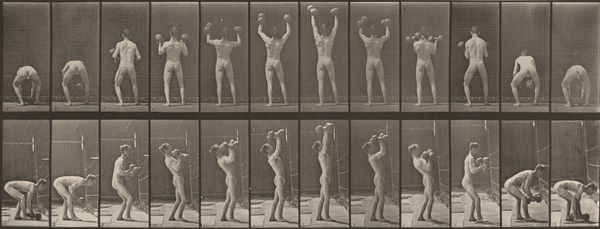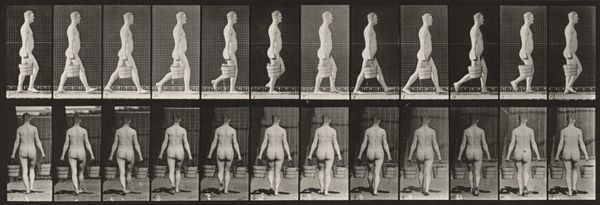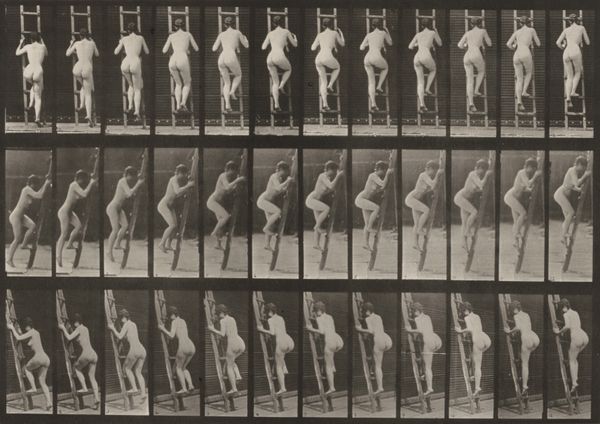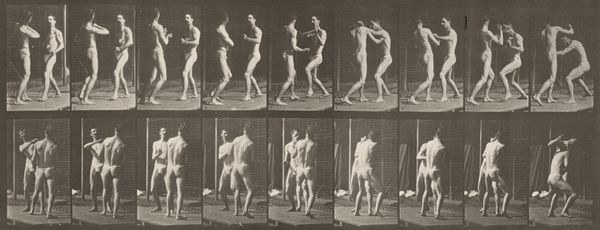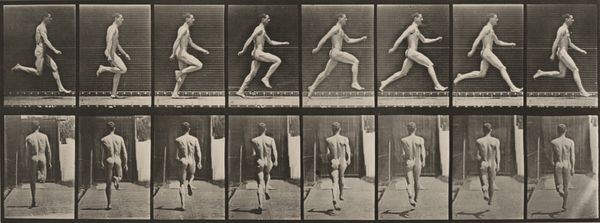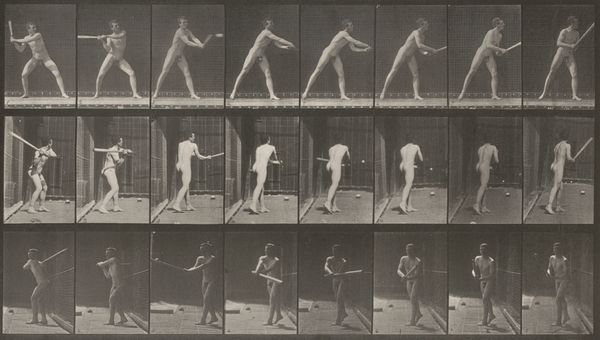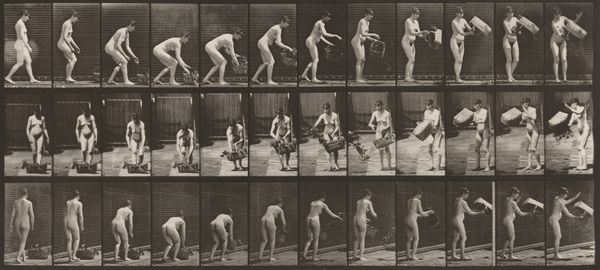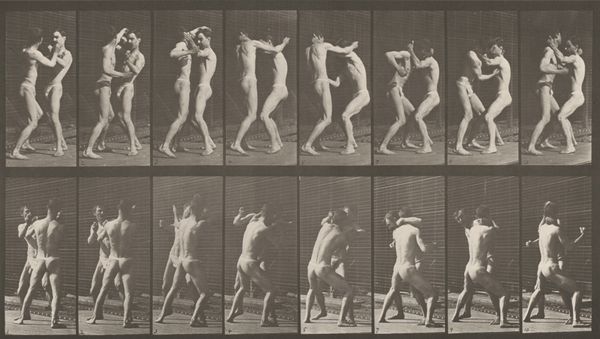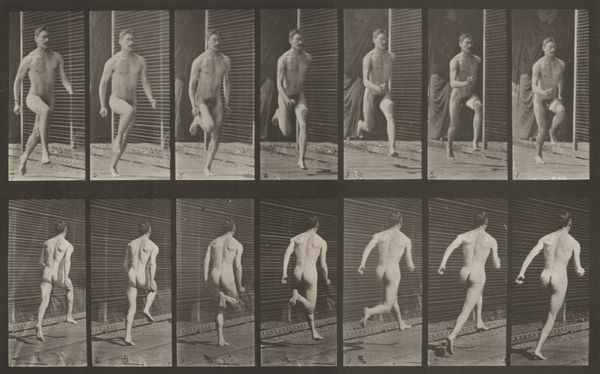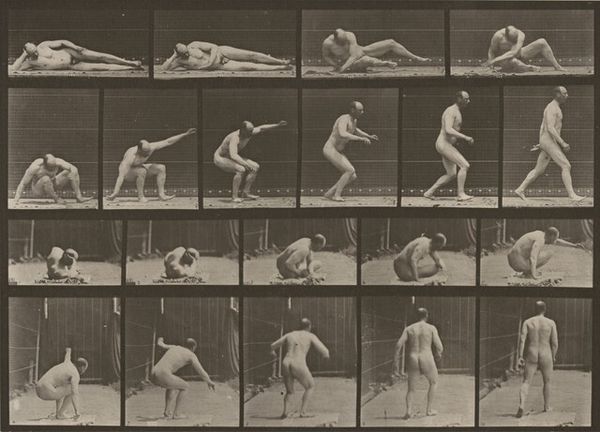
print, photography, gelatin-silver-print
#
kinetic-art
# print
#
figuration
#
photography
#
gelatin-silver-print
#
academic-art
#
nude
Dimensions: image: 18.1 × 40 cm (7 1/8 × 15 3/4 in.) sheet: 47.5 × 60.1 cm (18 11/16 × 23 11/16 in.)
Copyright: National Gallery of Art: CC0 1.0
Curator: This is "Plate Number 111. Ascending a ladder" from 1887 by Eadweard Muybridge. He made it using a gelatin silver print. Editor: It has such an analytical feel to it. Almost like a scientific study. The arrangement of frames creates a fragmented yet fluid image, showing this nude figure’s upward motion. Curator: Right, Muybridge was deeply interested in capturing and understanding motion. His work stemmed from a project involving Leland Stanford, who wanted proof of whether all four of a horse’s hooves left the ground simultaneously at some point during a gallop. This question had social implications concerning wealth and the new means of recording human movement, because horses were a way to gain both. Editor: The way he decomposes the act of climbing into discrete images… each pose, each shift in weight… he lays bare the mechanics of human movement with a kind of rigorous abstraction. Look at the play of light and shadow across the figure's back in each successive frame, delineating the flexing of muscles. Curator: He had his own studio. Labor was organized with teams of technicians, who each had specialized tasks. Multiple cameras had to be triggered in rapid succession using tripwires or electromagnetic triggers, synchronizing the moment of exposure. Also, the development, printing, and mounting were equally specialized labor. Think of all of that as the industrial context that influenced this type of photographic process. Editor: The starkness of the backdrop forces you to focus entirely on the human form and its movement through space. Each frame offers a variation on the same theme, rhythmically unfolding a sequence of ascending, dynamic forms. Curator: It certainly paved the way for later technological developments, like motion pictures and animation. These images contributed to our broader cultural understanding of what’s natural and beautiful, informing fields far beyond just art. Editor: Absolutely. A fascinating convergence of science and aesthetics. There's something profoundly beautiful about the visual dissection of human motion, no? Curator: Definitely. The historical context and Muybridge's working processes completely change my perspective every time. Editor: And the interplay of line and form within each frame will always capture the grace inherent to even the most mundane actions.
Comments
No comments
Be the first to comment and join the conversation on the ultimate creative platform.
